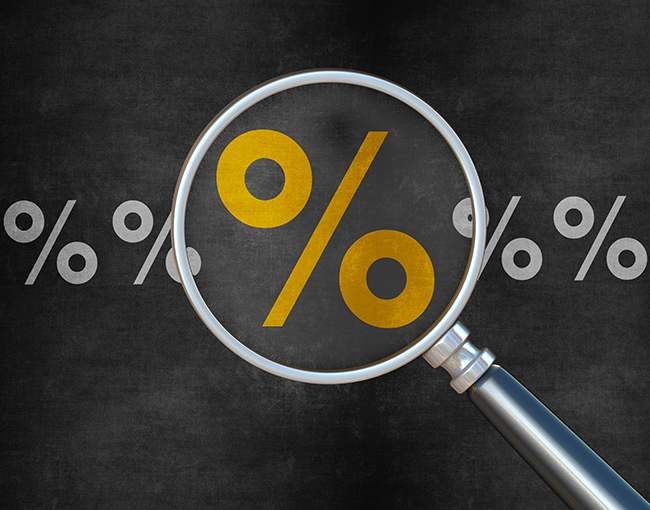Home > Insights > Publications > What’s my rate again? Revisiting lending boilerplate as LIBOR expires
This article first appeared in the September 30 issue of the Los Angeles Business Journal.
For many years, floating-rate loans (whether offered by banks or alternative lenders) have tended to use LIBOR as the interest rate index of choice. LIBOR stands for the “London Interbank Offered Rate” and is determined based on the price of U.S. dollars in the London interbank market. LIBOR is typically the interest rate used by banks when charging one another to borrow funds on an unsecured basis. Individual banks report these rates, which are then compiled and reported for various reporting periods (1-month, 3-month, 6-month, etc.).
For most loans, LIBOR plus an additional margin or “spread” determines the ultimate interest rate. However, LIBOR is scheduled to go by the wayside after 2021 for myriad reasons, ranging from accusations of rate manipulation to the fact that inter-bank borrowing has dramatically thinned, to the point where banks are willing to pay institutions to take money off their hands.
The potential practical effect of this change is significant, most particularly to borrowers with loans that (a) have a maturity past 2021 and (b) are based on LIBOR. For those borrowers, it is paramount to do a deep dive into their credit agreements, particularly some of the boilerplate terms that were likely not at the forefront of anyone’s mind when the loan was being negotiated. Most credit agreements have clauses known as “fallback provisions” detailing how to compute interest rates when LIBOR is unavailable. Unfortunately, the specificity of these fallback provisions vary. Most were designed to address a temporary glitch in computer systems that could make it impossible to discern LIBOR at any given time.
Consequently, many loans lack a legitimate alternative framework in the event LIBOR is no longer in use. Some lenders have language which provides that any alternative rate employed will be at the lender’s discretion based on then-prevailing market conditions. Many others provide that the Prime Rate will serve as the fallback if LIBOR is unavailable. The application of such a provision can be severe, given that the Prime Rate tends to be in excess of LIBOR. For context, the 1-month LIBOR (a common interest period in credit facilities) as of the date of this publication is 2.06% while the Prime Rate is 5.25%. Thus, if a lender has the power or discretion to utilize the Prime Rate as the alternative to LIBOR, the potential impact would be to increase the per annum interest rate by more than 3%.
This is undoubtedly a material increase. For that reason, it is vital for borrowers with interest rates tied to LIBOR to (a) examine the maturity dates in their current financing and (b) evaluate the impact if the rate index utilized in the fallback provision became the actual interest rate. If such an analysis indicates a potentially material increase, the best course is to reach out to the lender early to discuss potential amendments as far in advance as possible of any potential changeover.
Our experience representing lenders of all kinds (whether national banks or alternative lenders) is that most lenders understand the business impacts of these potential increases and are willing to work with valued borrowers to create feasible alternatives. If a lender is not willing to do so, knowing this well in advance of looming deadlines is vital, as this fosters the ability to consider multiple paths to refinance or otherwise repay the loan prior to maturity.
Interestingly, despite LIBOR’s pending demise, many floating-rate loans being made today continue to utilize LIBOR as the reference rate. This is partly because a new standard-bearer has yet to emerge. One of the more promising benchmarks has been “SOFR”, which stands for the Secured Overnight Financing Rate. Developed by the Federal Reserve Bank of New York, SOFR is determined by the cost of borrowing between banks and investors where the underlying obligations are secured by U.S. Treasury Securities. Introduced in April 2018, SOFR has tended to track the Federal Funds Rate, and as of the date of this publication is 2.25%, which is fairly close to the 1-month LIBOR.
Therefore, if you are negotiating a floating-rate LIBOR-based loan, be mindful of the fallback provisions and what index your lender intends to utilize in a post-LIBOR world. Make sure the rate to be implemented in a post-LIBOR world is a rate that tracks as closely as possible to the anticipated rate. If, for example, your lender intends to utilize the Prime Rate, adjustments to the spread may be required to minimize the financial impact. In any scenario, the devil is in the details (and in the boilerplate you never thought you would have to read).
Simran Bindra is counsel with Thompson Coburn LLP in Los Angeles. Simran provides strategic banking and finance counseling to clients and represents owners and developers of commercial real estate in the acquisition, disposition and financing of assets. He previously served as General Counsel and Senior Director for the commercial and specialty finance group at Capital One, N.A., and has served as Senior Counsel with a publicly traded real estate investment trust.

